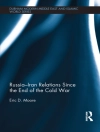Time–activity diaries kept by members of the general public indicate that on average people spend around 90% of their time indoors, this is associated with considerable exposure to air pollutants as not only is there infiltration of pollutants from outdoors, there are also emissions indoors that can lead to elevated pollutant concentrations. Despite this, and the fact that the WHO produces air quality guidelines for indoor air, the only statutory requirements for monitoring of airborne pollutant concentrations relate to the outdoor environment. Given its importance as a source of air pollution exposure, increasing attention is being given to pollution of the indoor environment.
This volume considers both chemical and biological pollutants in the indoor atmosphere from their sources to chemical and physical transformations, human exposure and potential effects on human health. It is a valuable reference for those working in in environmental policy, civil and environmental engineering as well as for atmospheric chemists.
قائمة المحتويات
Indoor Sources of Air Pollutants;Outdoor Air as a Source of Indoor Pollution; Chemical and Physical Properties of Indoor Aerosols; Indoor Emissions as a Source of Outdoor Pollution; Chemical Reactions in the Indoor Atmosphere; Biological Particles in the Indoor Environment; Indoor Air as a Contributor to Air Pollution Exposure; Health Effects of Indoor Air Pollution
عن المؤلف
Ron Hester is an emeritus professor of chemistry at the University of York. In addition to his research work on a wide range of applications of vibrational spectroscopy, he has been actively involved in environmental chemistry and was a founder member of the Royal Society of Chemistry’s Environment Group. His current activities are mainly as an editor and as an external examiner and assessor on courses, individual promotions, and departmental/subject area evaluations both in the UK and abroad.












